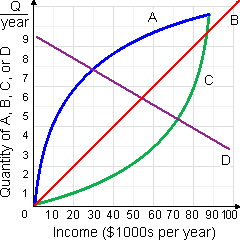This given figure as in below demonstrates how consumption of goods A, B, C and D varies like a family’s income changes. Since income rises, the income elasticity of demand is positive and increasing for: (w) good A. (x) good B (y) good C. (z) good D.

Can anybody suggest me the proper explanation for given problem regarding Economics generally?